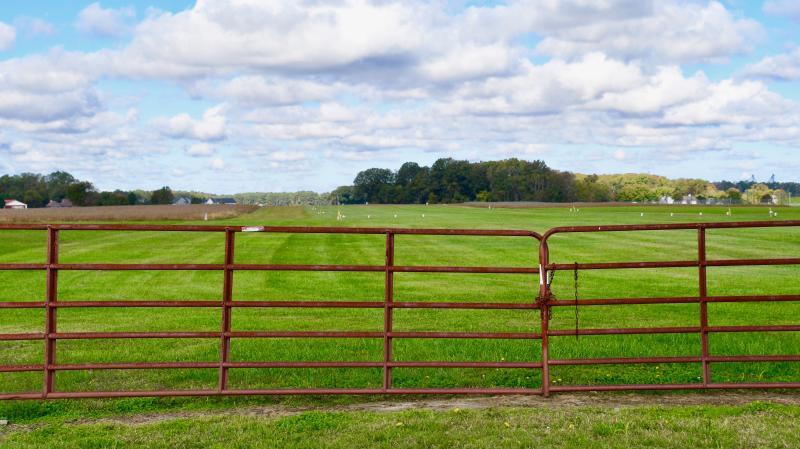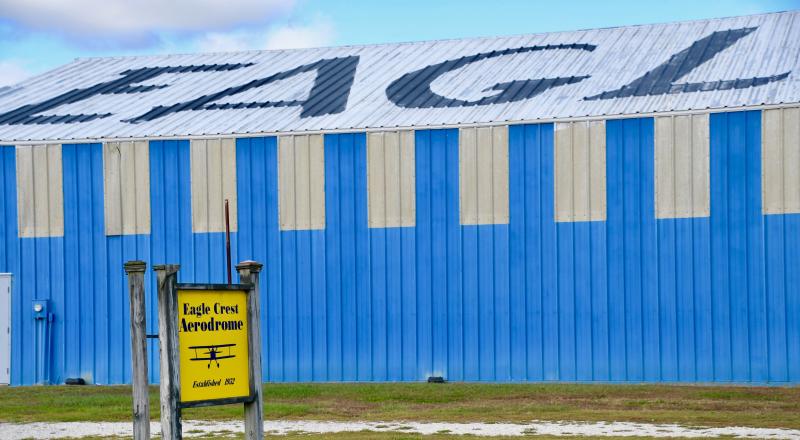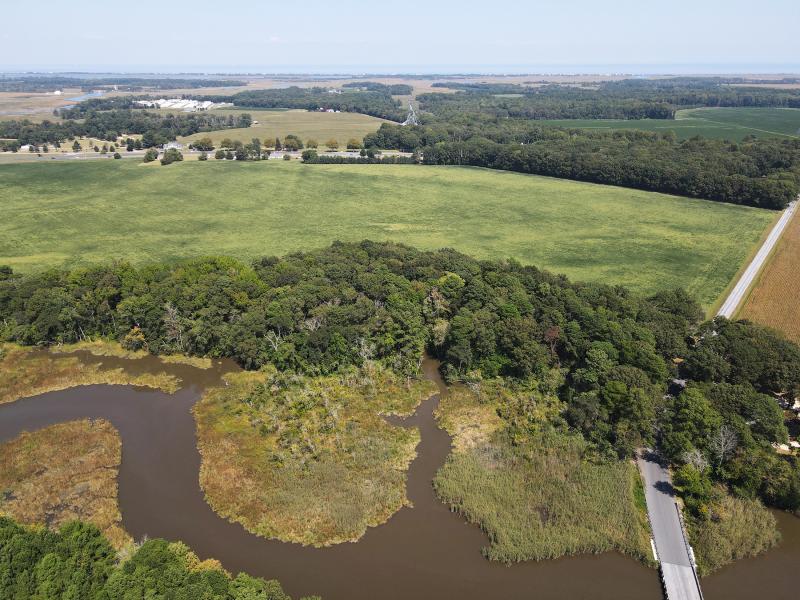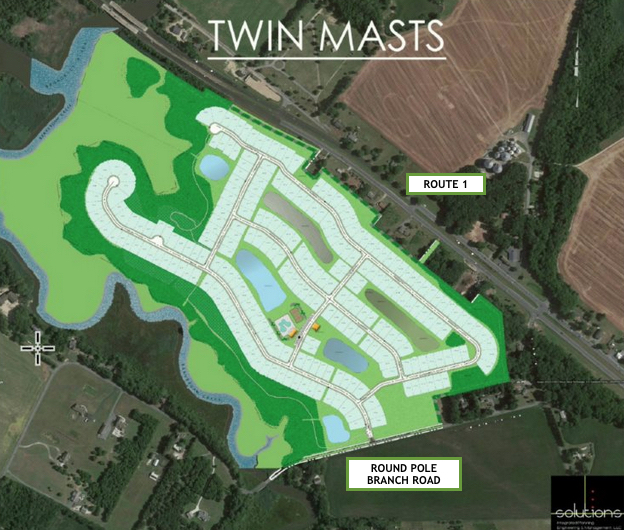Eagle Crest pilots express concerns about Twin Masts near Milton
Pilots and residents who live in the Eagle Crest community and use the airport turned out in force Sept. 28 during a Sussex County Planning & Zoning Commission public hearing to voice their concerns with the proposed Twin Masts subdivision across from the airport runway along Round Pole Bridge Road near Milton.
In the more than two hours of public comment in opposition to the subdivision, three-quarters of the testimony involved the Eagle Crest Aerodrome, which has been operating since 1952. Twenty-five pilots live in the community and fly their planes out of the private airport with a grass runway.
They disputed some of the information presented by the developer’s airport consultant and asked that the commission protect the future of the airport by requiring disclosures to new residents of the impacts of an airport, including noise. They also want a runway protection zone preserved along the flight path in case of an emergency landing at takeoff.
Many of the pilots said they met with the developer to express their concerns and work out a plan to preserve open space along Round Pole Bridge Road, but were unable to reach a consensus.
Developer Twin Masts LLC has plans for a 249-unit single-family home cluster subdivision on 113 acres on the west side of Route 1 and the north side of Round Pole Bridge Road near Milton. The original application was withdrawn to make changes based on public comments.
Following the four-and-a-half-hour Sept. 28 public hearing, the commission deferred a vote to a future meeting.
Doctor: Safety paramount
“It was a one-sided report with lots of errors,” said Dr. Abraham Scheer, an Eagle Crest resident, concerning the consultant's presentation. “They didn’t contact us for our opinion.”
As a physician, he said, he’s concerned about health and safety. “There has to be disclosure of hazards,” he said, adding that includes the use of lead in airplane fuel that is expelled during takeoff.
“The consultant never discussed this,” Scheer said. “And noise above 70 decibels can cause physical stress and restrict sleep. It can contribute to hearing loss and affects infants.”
He said safety must be paramount with a proper runway protection zone.
Scheer said the noise issue can't be overlooked, and new residents would eventually complain about it.
“We are trying to avoid that,” he added. “This would be malpractice in my profession. In yours, it’s called a major catastrophe. We want to be good neighbors, but it’s hard to be with this development.”
Resident John Chirtea, who has been a pilot for 68 years, said he has made an emergency landing in the farm field at the end of the runway, which is the location of the proposed subdivision. “There will be 249 homes all within the flight path,” he said.
He said airport management and residents worked with the developer of the nearby Pintail Point subdivision to keep an open area on the western border of the property.
He said the zone should not include any of the proposed development, including a pickleball court, parking and utilities. “This not a negotiation between us and the developer. Our plea is for you to do the right thing and give us a path,” Chirtea said.
Protection zone in place
MacKenzie Peet, the developer’s attorney, said the site plan includes a runway protection zone in two 100-by-1,000-foot sections. She said residents and pilots are most concerned with the section closest to the runway where there will only be at-grade improvements. “This will be more restrictive,” she added.
She reminded residents that the developer is not required by law or county code to provide a runway protection zone.
“This an amended condition to address Eagle Crest residents’ concerns,” Peet said.
Pilots express concerns
Sean Collins, eastern regional manager of the Aircraft Owners & Pilots Association, expressed the association's concerns in a letter to the commission. He said a runway protection zone generally is restricted to uses such as agriculture and open space, and does not involve congregations of people, buildings or other obstructions.
He said covenants and deed restrictions have been used successfully in other jurisdictions to disclose potential airport-related effects on airport-vicinity developments.
Robert Mason, a commercial pilot and flight instructor, said his concern is for the safety of people around the airport.
He said it's imperative that a runway protection zone be in place and deed restrictions be enacted to alert new residents about the operation of the airport.
“This development can coexist with the airport, but we need a runway protection zone,” he said. “It's important to have air rights.”
Mason said the plan should have all the green, open space on the property across the road from the airport.
Jeff King, an Eagle Crest resident, said he owns a twin-engine plane that exceeds 100 decibels at takeoff. “You can feel that sound in your body, and windows can shake,” he said, adding new residents should be made aware of the possible noise levels. “It doesn't matter if it's a private or public airport, it's the same noise.”
“And we don't want to hit a house. We need open space to land. We need a plan for the future,” King said. “We want disclosures to protect the airport in the future.”
Eagle Crest resident and pilot Denis Le Digabel showed several photos of plane crashes into homes. He said to place any kind of development in the takeoff path is irresponsible. “With engine failure, there is no open area to land,” he said.
Resident Peter Caltagione flew in from Alaska, where he has a law practice, just for the hearing. “Small airports are under attack and some are closing,” he said, adding because of some of the same issues being discussed in regard to Twin Masts.
He said a permanent easement has been drafted to protect the airport.
Preserve more trees
Resident Al Rizzo, former project leader of the Delaware refuge complex, questioned the superior design standards, which he called nebulous and subjective.
He said the proposed ground infiltration stormwater management system will have issues. “They need to reconsider their plan, which includes significant amount of forest reduction,” he said.
Rizzo said as much forest as possible should be preserved to aid in stormwater and runoff management. “The plan can be better if they maintain as much forest as possible,” he said.
He said the forested parcels can count as passive open space with groundwater infiltration and walking trails.
“You do have discretion to protect our safety and the integrity of the natural resources,” he told the commission.
Road conditions
There were also concerns expressed about the condition of Round Pole Bridge Road, which is a two-lane road with no shoulders that contains five sharp turns.
“The traffic impact study needs to be concrete and not pieced together. It needs to contain other pending developments [in the area],” Janet Le Digabel said.
She said a precedent about the concerns with the condition of Round Pole Bridge Road has already been set when the commission denied the application for Lockhaven, a 25-unit large-lot subdivision on a 126-acre parcel. One of the reasons given for the denial in October 2021 was the condition of the road.
She also expressed concerns about a possible service road along Route 1. Commission Chair Bob Wheatley said DelDOT officials have already gone on the record stating that access from Route 1 would not be granted. “Can we get that in writing?” Le Digabel asked.
Le Digabel said if the subdivision is approved, the commission should enact the following conditions:
Improvement of the entire two miles of Round Pole Bridge Road, not just along the frontage of the subdivision, with 11-foot travel lanes and 5-foot shoulders; no homes in the flood zone; no homes in the 100-foot-by-2,000-foot restricted flight zone; disclosure of lead in plane exhaust and expected decibel levels of planes taking off; speed bumps every one-third mile on Round Pole Bridge Road; with no construction until 2028 when the Cave Neck Road-Route 1 grade-separated interchange is expected to be completed.
“Please make a logical decision that fits in with county code. Is this a logical place, on a terrible road with terrible traffic and near an airport, to put 249 homes?” she asked.
About Twin Masts
Access to the community would be from Round Pole Bridge Road.
Plans include a pool, pool house and pickleball courts, a 30-foot forested/vegetated perimeter buffer, central water and sewer service, a trail system, 53% open space, sidewalks on both sides of interior streets with a connection to a multimodal path on Round Pole Bridge Road.
In her original testimony, Peet said tree preservation, no lots in wetlands and a 40-foot setback between lots and wetlands areas minimize impact on environmentally sensitive areas.
Part 1, concerning the developer's plans for the subdivision, appeared in the Oct. 13 edition.


















































